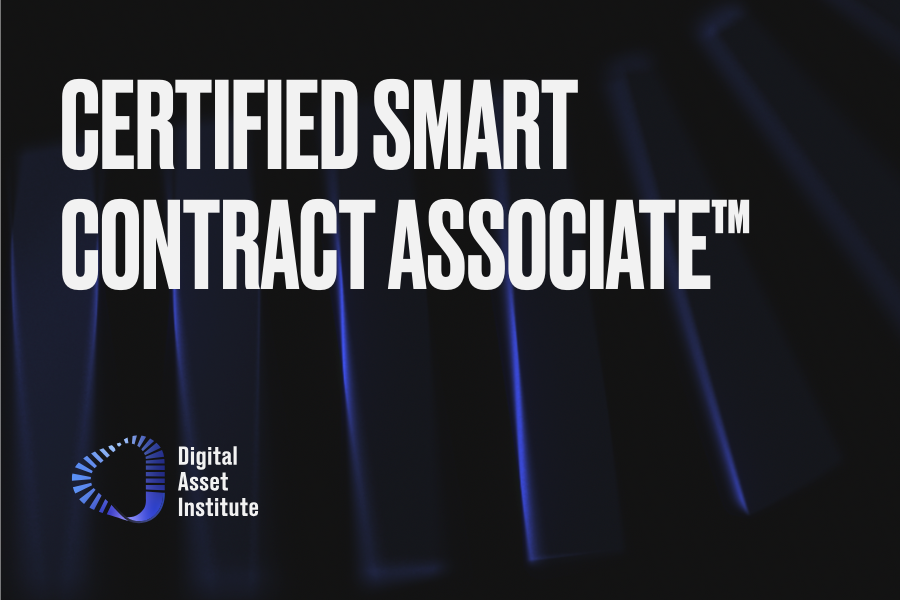Explain what smart contracts are, how deployment/invocation/state changes work, and why determinism, immutability and transparency matter.
Describe the EVM, bytecode, the gas model, and sandboxed execution, including oracle use for trusted external data.
Identify common vulnerabilities (reentrancy, access control) and weigh upgradeability, governance, and incentive trade-offs in secure designs.

Program Overview
This program demystifies smart contracts from first principles to practice. You’ll start with core properties, determinism, immutability, transparency, composability, and trace the lifecycle: deployment, invocation, node execution, and on-chain state changes. We unpack the execution environment (EVM, bytecode, stack model, and gas economics) and why contracts are sandboxed from off-chain data unless connected via oracles. Then we examine real applications across DeFi, NFTs, DAOs, gaming, insurance, and tokenised real-world assets, before confronting limitations such as “code is law,” upgradeability/governance trade-offs, and economic/UX risks. Finally, we look ahead to account abstraction, legal+code convergence, AI-assisted development, and cross-chain execution. Graduates leave fluent in how smart contracts work, where they fail, and how to design with confidence.
Course Curriculum
-
1
How Smart Contracts Work
-
(Included in full purchase)
The Mechanisms Behind Smart Contracts
-
(Included in full purchase)
Video 1 - The Mechanisms Behind Smart Contracts
-
(Included in full purchase)
Quiz 1
-
(Included in full purchase)
Automating Transactions and Agreements
-
(Included in full purchase)
Video 2 - Automating Transactions and Agreements
-
(Included in full purchase)
Quiz 2
-
(Included in full purchase)
Examples of Smart Contract Applications
-
(Included in full purchase)
Video 3 - Examples of Smart Contract Applications
-
(Included in full purchase)
Quiz 3
-
(Included in full purchase)
Challenges and Limitations of Smart Contracts
-
(Included in full purchase)
Video 4 - Challenges and Limitations of Smart Contract
-
(Included in full purchase)
Quiz 4
-
(Included in full purchase)
Innovations & The Future of Smart Contracts
-
(Included in full purchase)
Video 5 - Innovations & The Future of Smart Contracts
-
(Included in full purchase)
Quiz 5
-
(Included in full purchase)
Skills Gained & Business Application
You’ll turn “smart contract” theory into auditable product and risk decisions. Learn to read contract interfaces and events, reason about EVM execution and gas, and design oracle-aware logic that fails safely. Build a control set that actually reduces incidents: permissioning and pausability, upgrade patterns (and the governance they imply), audit/verification workflows, and incentives that resist flash-loan or reward-farming exploits. Apply these skills to real use cases, automated lending/liquidations, royalty enforcement, token-gated access, parametric insurance, and cross-chain triggers, so your teams can ship features that are secure, explainable, and regulator-ready. Expect practical outputs: checklists, disclosure templates, and architecture patterns for wallet UX, streaming payments, DAO voting/treasury, and RWA tokenisation.
Who this program is ideal for
✓ Product managers & solution architects: Specify contract features (roles, pausability, upgrade paths), oracle integrations, and gas/UX trade-offs for launches. ✓ Protocol & smart-contract engineers: Implement EVM-based contracts safely; enforce access controls; adopt audits, formal verification, and resilient incentive design. ✓ Risk, compliance & audit leaders: Document “code-is-law” and upgradeability governance; define irreversible-transaction, oracle, and disclosure procedures. ✓ Legal & policy teams: Explore legal+code convergence and contract recognition; align DAO/treasury actions with transparent, on-chain enforcement. ✓ Security & DevOps: Operate audit pipelines, threat models (reentrancy/overflow/access), and monitoring for upgrades and cross-chain interactions. ✓ Data/identity & platform architects: Plan for account abstraction and wallet UX that enables recovery, policy rules, and programmable permissions.
Become A Certified Smart Contract Associate
Learners earn the Certified Smart Contract Associate credential with frameworks, templates, and examples to design, review, and ship smart-contract-powered experiences, safely and credibly.
$322.00
